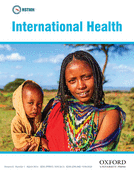-
PDF
- Split View
-
Views
-
Cite
Cite
Rebecca F. Grais, Hamadou O. Adamou, Keeping rotavirus vaccines on the international agenda, International Health, Volume 6, Issue 1, March 2014, Pages 1–2, https://doi.org/10.1093/inthealth/ihu005
Close - Share Icon Share
Rotaviruses are the leading cause of severe dehydrating diarrhea in children under 5 years globally, with low-income countries estimated to account for almost all rotavirus-related deaths.1 Protecting all children, particularly the most vulnerable and those with the poorest access to appropriate and affordable treatment, from severe rotavirus gastroenteritis should be kept on the forefront of the international health agenda. Although burden estimates for sub-Saharan Africa vary between countries and populations, there is little debate that diarrhea illness among children remains one of the key causes of morbidity and mortality. Despite unequivocal advances in treatment and prevention, the prevention and management of childhood diarrhea remains a struggle to implement in many underserved and vulnerable populations. Rotavirus vaccines are arguably one of the most important advances in this area. Individuals will probably have multiple rotavirus infections, but first infections are usually the most severe. Virtually everyone is infected by the third year of life, and in low-income countries the majority of the first infections occur during the first year of life. The clinical spectrum of rotavirus disease is wide, ranging from transient mild diarrhea to severe gastroenteritis, which results in dehydration, electrolyte disturbances, shock and potentially death.2,3 Although currently licensed vaccines have led to the drastic reduction in incidence in middle and high-income settings, their rollout in low-income countries, particularly sub-Saharan Africa, has been sluggish with both political and programmatic reasons being critical.
To date, two live-attenuated oral rotavirus vaccines are prequalified by WHO: Rotateq (Merck, Whitehouse Station, NJ, USA) and Rotarix (GlaxoSmithKline, Rixensart, Belgium).1–4 Prequalification is the mainstay with which resource-limited countries are able to access safe and affordable vaccines. Rotarix is a human monovalent vaccine, targeting G1P(8), the most common strain in high-income settings. It mimics natural immunity by the induction of homologous and broadly reactive heterotypic immunity against other human rotavirus strains. Rotateq, a pentavalent bovine-human reassortant (G1-4 and G6) vaccine, elicits serotype-specific responses against the most common circulating serotypes. Both vaccines are safe and neither have been associated with increased intussusception throughout their large-scale introduction in middle and high-income countries.5–7 Although both of these vaccines have led to the drastic reduction in incidence in middle and high-income settings, their rollout in low-income countries, particularly Sub-Saharan Africa, has been fraught with difficulties.
Their effectiveness is not the subject of this editorial, but like all oral vaccines, currently licensed oral rotavirus vaccines suffer from the plague of reduced performance in vulnerable populations.8 This phenomenon has been observed over all age groups, but is most pronounced in young infants. This has led to concerns about whether current developmental models for rotavirus vaccines are the most appropriate. Secondly, the transposition of safety fears in high-income countries with consistent access to high quality treatment onto to populations with often inconsistent or absent access to treatment for severe diarrhea exists. The first highly effective vaccine (a quadrivalent human-animal reassortant) developed and licensed in the United States, RotaShield (Wyeth-Ayerst, Philadelphia, PA, USA), was withdrawn due to the increased number of intussusceptions observed in post-marketing studies in 1999. The withdrawal of RotaShield led to reticence over the continued development of rotavirus vaccines. This fear, among other factors, led to the implementation of extraordinarily large clinical trials, as well as large-scale vertical safety surveillance programs during vaccine introduction. Although not unwarranted, these factors contributed to the difficult introduction of rotavirus vaccines to populations most in need.
The expanded programs on immunization (EPI) are arguably one of the greatest success stories in public health, extending and improving the lives of populations by protecting against vaccine preventable diseases. Difficulties in acceptance and understanding of the benefits of vaccination aside, delivery of multiple antigens to newborns, infants and young children is challenging in contexts where mothers and caregivers have the means and time at their disposition to seek preventive care. In vulnerable populations, where the pressures of caregiving, income generation, and where mothers may not be the sole decision-maker responsible for their childs' care, each visit to the health center adds additional burden. This is particularly true in countries such as Niger, where rotavirus is a key concern.9 As a result, preventive actions, such as vaccination, which may be poorly conceptualized and abstract, may remain lower on the daily priority list for the best-intentioned mothers and caregivers. Compounding matters further, access to care may be difficult due to physical or social distance or services themselves may be absent or underperforming. Currently, available rotavirus vaccines are given on a two or three dose schedule to young infants and are meant to coincide with the delivery of other core EPI vaccines. This is in and of itself not a programmatic limitation, but one where consideration of the vaccine dosing was taken into account and the number of additional visits reduced.
Conversely, from a programmatic perspective, the addition of more and more antigens necessitates additional cold chain-space, training and organization. In many contexts, these programmatic issues, such as cold-chain space, are enough to disturb an already fragile system and lead to hesitancy to introduce additional antigens.10 Price and supply issues compound this hesitancy. Although the prices of rotavirus vaccines have been reduced greatly over the past several years, the price per dose remains higher than that of other core antigens for children. Most importantly, the reduced price is supported by the Global Alliance for Vaccines Initiative, and although laudable, remains above the ability of many of the world's lowest-income countries to access. This price reduction does also not take into account the infrastructure and delivery of vaccines, perhaps the most pivotal component of ensuring vaccines reach populations in need. Finally, although additional rotavirus vaccine candidates are in development and trialing, there is a clear need for additional manufacturers to increase supply.
Competing interests: None.




Comments